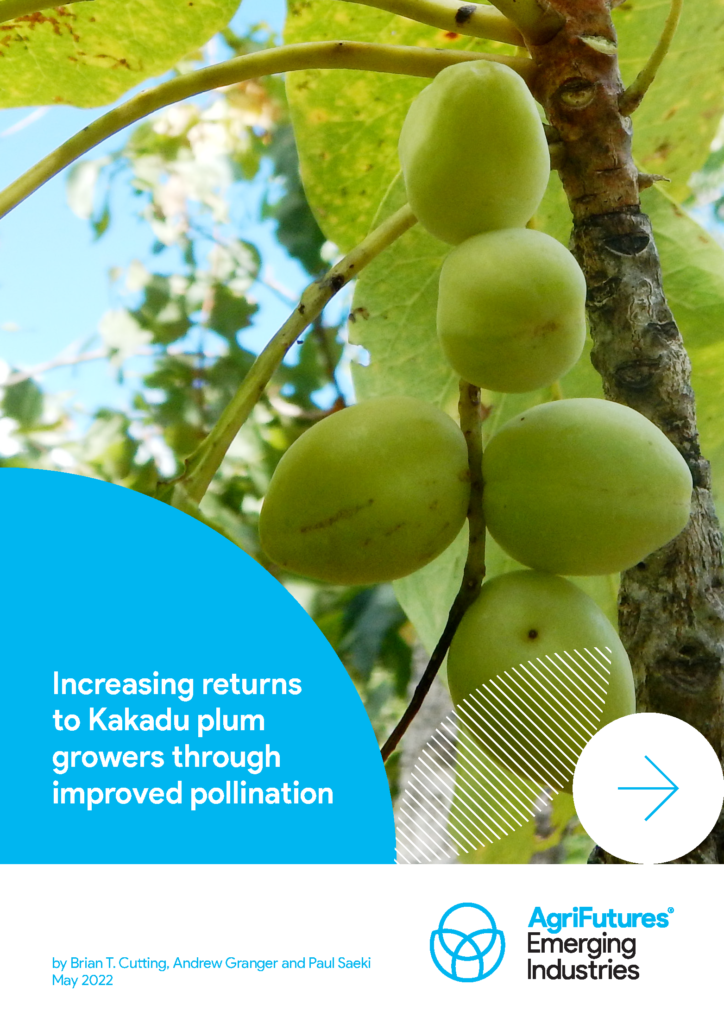Australian Native Foods Kakadu Plum Project
AgriFutures Australia has a goal to support the early stage establishment of high potential rural industries. The Australian native foods and botanicals industry has many...

48 pages
Published: 16 Dec 2022
Author(s): Brian T. Cutting, Andrew Granger, Paul Saeki
ISBN: 978-1-76053-328-1
Download report PDF
DownloadPurchase a hard copy - AUD $50
An indigenous Australian bush food, Kakadu plum, or Gubinge (Terminalia ferdinandiana) is produced across a wide area in the north of Australia, including Western Australia (WA) and the Northern Territory (NT). Kakadu plum plays an important social and economic role for many remote Aboriginal communities, with the harvest bringing together different clans and Traditional Owner groups into one economic activity.
Most Kakadu plum is wild harvested, however there are a growing number of orchards being developed by both Indigenous and non-Indigenous groups. In the 2018-19 season, the Northern Australia Aboriginal Kakadu Plum Alliance harvested more than 20 tonnes of Kakadu plum, with a farm gate value of $650,000.
Kakadu plum growers have identified variable yields and quality as a limitation to industry expansion and attribute much of this to poor pollination and fruit set. This project was designed to test some basic pollination management techniques, including exploring whether managed colonies of stingless bees could be deployed to enhance cross-pollination.
This report will be a resource to aid the general understanding of Kakadu plum pollination biology, and to upskill producers in their understanding of pollination. It improves the collective understanding of the basic floral biology of Kakadu plum; provides an awareness of the different types of insects visiting Kakadu plum trees and the distinction between pollinators and those insects which do not pollinate; highlights tools to assist growers in making informed decisions on management that may affect pollination; and demonstrates Traditional Owner leadership in the development and growth of the industry. The report also outlines the need for further study to assess the potential for managed stingless bees to improve pollination and provide an additional revenue stream (e.g. honey production), given the challenges in managing colonies that were experienced during the project.